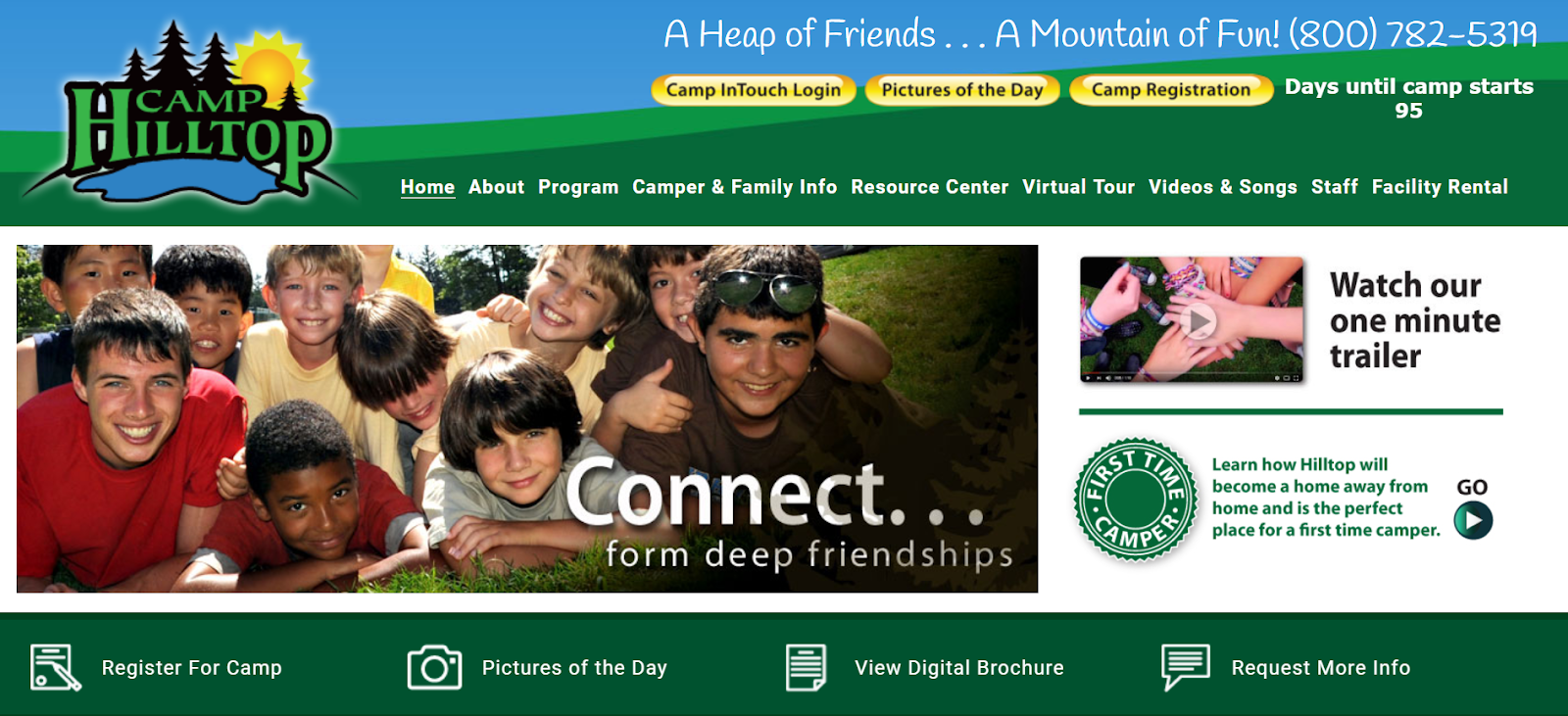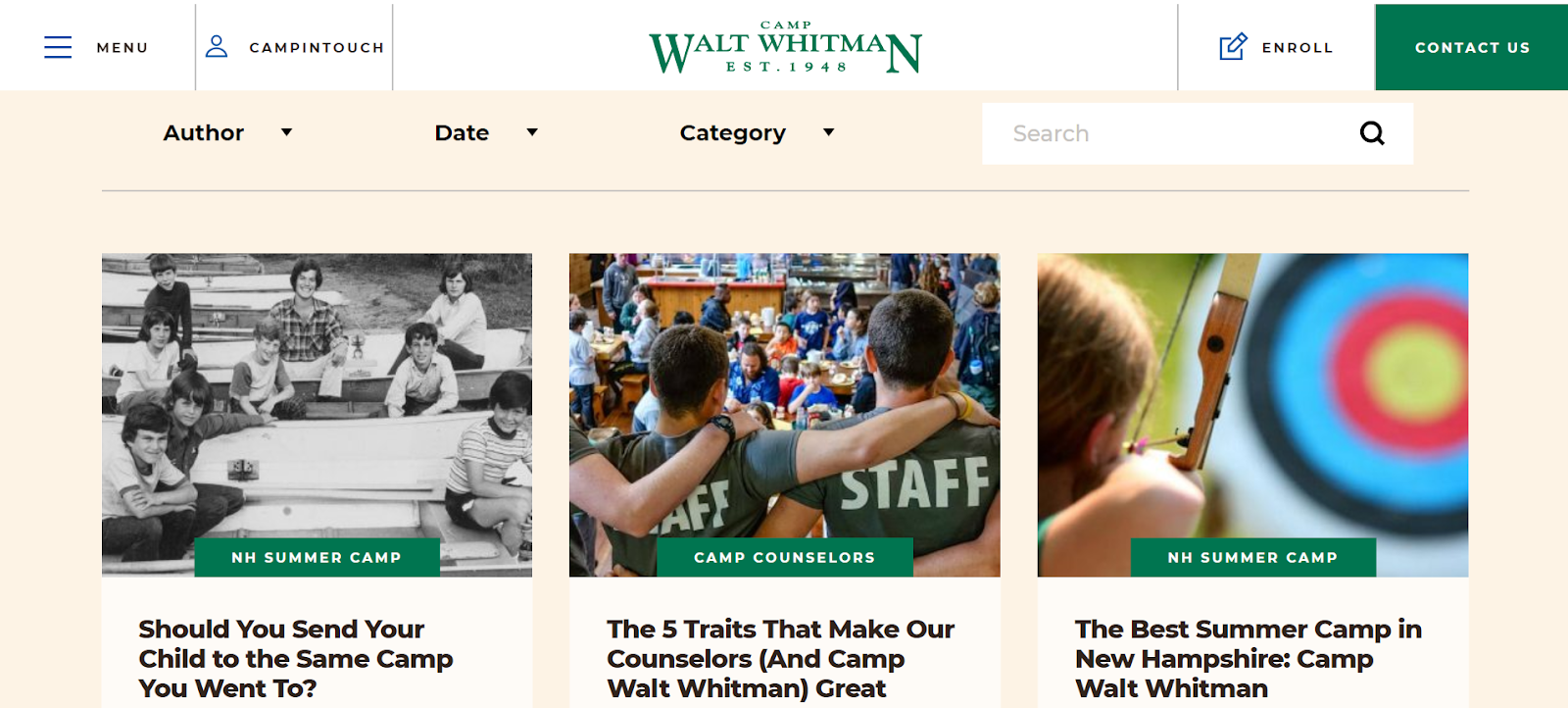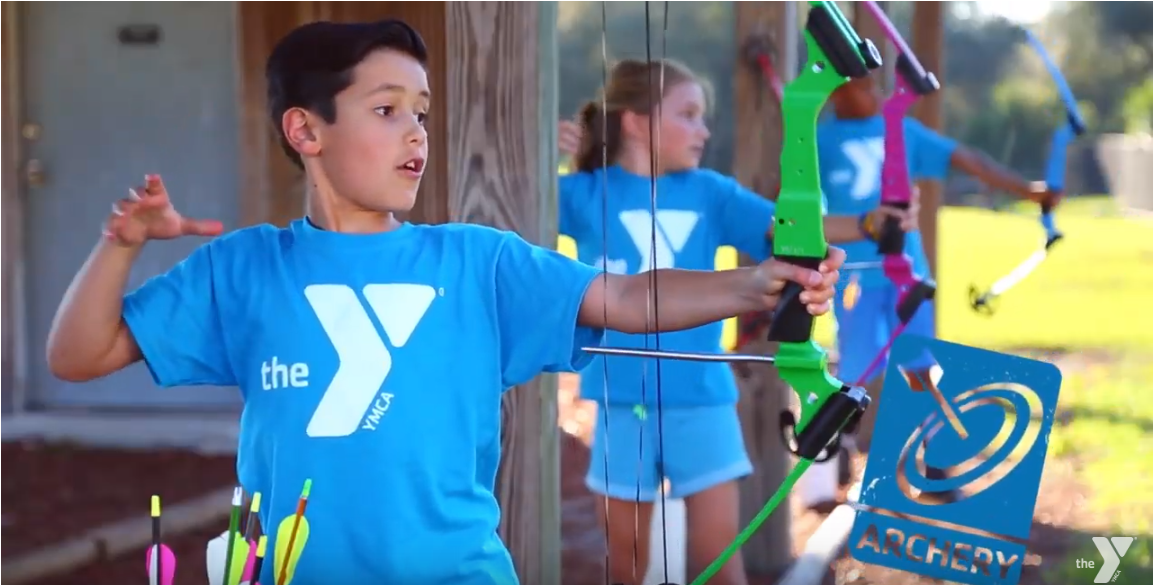With over 14,000 camps in the United States, tips to demystify camp marketing are important. Standing out and increasing camp enrollment can feel absolutely overwhelming. With so many marketing options, choosing the best channels to reach parents can feel impossible. Have no fear; we’re here to break it down for you, with 12 of the best ways to connect with parents and inspire them to enroll their kids in your camp season after season.
Before you jump into any summer camp marketing plan, there are a few things you should keep in mind.
Know your audience.
At a time when most parents are either Generation Xers or Millennials, it’s more challenging than ever to figure out how to appeal to members of two very different generations.
Who, and what is a Gen X? These are parents that are now in their 40’s and 50’s that came of age in the very early days of the internet. Some are extremely tech-savvy, others less so. They research thoroughly, and expect complete information on items and services they buy.
How to appeal to Generation X Parents:
- Highlight the Individual. Gen Xers can be cynical and don’t usually trust the masses, so they are typically more concerned about individual success than doing things for the common good. Create content that not only shows group connections at camp but also features how individuals thrive.
- Build Personal Relationships. Because of their skepticism, it takes longer to gain a Gen Xer’s trust. Develop ways to build relationships and make connections early. When you connect with a Gen X parent, keep that connection reliable and regular.
- Maximize SEO. Gen Xers respond more to online advertising than Millennials, and they conduct most of their research online. Do whatever you can to optimize online channels and search result placement.
Millennials are the huge cohort that is typically children of the Baby Boom generation. They came of age as the internet became commonplace. Social media was the way they shared information, and their cell phone is a prized possession, as they expect to conduct business and make their life work through their online presence.
How to Demystify Camp Marketing and Appeal to Millennial Parents:
- Make it Meaningful. With a population of 73 million and counting, Millennials are now the largest living adult generation in 2019. They are also the least trusting when it comes to traditional advertising. Millennials crave connection and want to see that personal value in something.
- Make it Mobile-Friendly. Millennials rely mostly on their phones for online information, so make sure that all of your online content works well on a phone.
- Make it Easy. Millennials like fast results and are less patient than older generations. Make it fast and easy for Millennial parents to fall in love with your camp and register their kids.
- Make Real Connections. Millennials prefer experiences and need to see something to believe it, so the more that you can engage them in real-life experiences that show off your camp, the better.
Regardless of generation, all parents want to know that their kids are going to be safe, are going to be supported, are going to grow, and are going to have fun. No matter what channels you choose, make sure that these basic needs guide how you make connections with parents and boost camp enrollment.
Streamline Your Process to Demystify Camp Marketing
Plan ahead to make as many of your channels work together and support each other as you can so that you can focus on what matters most: making meaningful and lasting connections with parents who want to send their kids to your camp. Consider using an online camp management platform that enables you to do it all in one place.
Create content that you can use on several channels to make the most of the time and money you invest in your summer camp marketing and be prepared to capture the best photos and videos during the camp season. Be intentional about your footage so that you can use it on social media, your website, prints ads, and whatever else you do to attract parents to your camp.
1. Make Your Website Unforgettable
Each channel should lead parents to your website, so it better be amazing when they get there. Be particularly intentional about what you put “above the fold,” or what visitors see at the top of your landing page before they scroll down.
Check out Camp Hilltop’s website and how they’ve utilized their landing page, particularly above the fold. Notice how the images, text, and buttons all address parents’ likely questions and concerns, and each aspect appeals to what they’re looking for. There are also many calls to action that invite parents to request information and enroll their kids in camp. This website has it all: it’s easy to use, it’s fun to look at, it’s engaging, and it shows kids having a blast while making safe and meaningful connections at camp.

2. Build a Blog
A blog is a great way to lead parents to your camp’s website while also showing off your camp.
Check out Camp Walt Whitman’s blog for a great example of what to post in a summer camp blog. From The Best Summer Camp in New Hampshire to 10 Things to Take to Summer Camp You May Not Find on the Packing List , Camp Walt Whitman’s blog not only delivers timely and relevant information, it also maximized SEO potential with keywords and phrases that parents often search. Notice how the focus of their posts are varied with features about specific campers, tips about their own camp, and advice about camp life in general. Each post has a picture that grabs attention and is relevant to the post content, which makes sharing the posts on social media easy and another great way to connect parents and campers to their website.
3. Get Social on Social Media
The influence of social media and its power to connect parents to your camp is obvious. How to use it wisely is not. It’s important to know how to best use each platform and to choose the platforms that parents use the most. On all platforms, it isn’t just about gaining followers and likes; it’s about engaging those followers in actions that lead to your goal: getting parents to enroll their kids in your stellar summer camp.
The platform that adults use the most, Facebook gives you a landing page and not just a post stream. We don’t recommend using this as a replacement for your website, but it is a great way to get parents to your website and registration pages. Facebook is also a great way to keep parents and campers connected because you can create groups based on location and program attendance that encourage camp re-enrollment.
Check out The Goodtimes Project’s Facebook page for a great example of how to add features that encourage parents to connect to their program while also showing their ongoing commitment to their campers and their community. Find
While Facebook is mostly about what happened and that is going to happen at camp, Twitter is all about the ‘now’. Users rely on Twitter for real-time action and updates. Before and after camp, use Twitter to connect with parents about what’s happening as you prepare for the next season and reflect on the last. During camp, keep parents connected to their kids and excited about what’s happening at camp. This will attract new parents because they will see all of the amazing things you’re doing to engage other kids, and they will want their kids to be a part of it.
A completely visual platform that hooks parents with engaging photos and videos, Instagram is a great way to grab attention and share your camp identity, philosophy, and culture. Feature images of campers engaging in all aspects of your camp so that parents can see and feel what life is like at your camp. Check out our other blog post with tips on how you can make the most of your camp’s Instagram account.
Follow these tips to make any of your social media channels a huge success:
- Hire a Professional. We know that this is easier said than done. If you can work it into your budget to hire someone who really knows what they’re doing, then do it. Most camps are community-based, so try to hire someone who really knows your camp and your community.
- Know Your Options. If you can’t hire a professional, then take the time to learn about each social media platform so that you don’t miss opportunities to capitalize on each post and get more campers enrolled in your camp. For example, Facebook offers Facebook Blueprint, which provides online courses that help you best use their marketing tools.
- Make Families Proud. Parents like to feel proud of their kids, and if their kids are featured in an awesome post, they’ll share it with their friends and followers.
- Be Responsive. With thousands of other camps just a click away, don’t give parents the time to look anywhere else. Respond quickly to comments and questions to keep parents connected to your camp.
- Invest in Sponsored Posts. Each social media platform allows you to pay to have your posts seen by people outside of your immediate network, which is exactly what you want. If you’re not working with a pro, learn how to best use these tools to get the most bang for your buck.
- Know your Hashtags. Research which summer camp hashtags are the most appealing to parents and the most relevant to your summer camp.
- Engage in the Community. Step outside of your own Facebook page or Twitter feed and strategically engage with other people’s posts. Join online communities that have members within your target audience.
4. Invest in Display and Search Ads
Connect with parents by making your camp the first one they see when they search for the best summer camp, and hook them even more with ads that appear on the sites they frequent. Like paid social media advertising, managing a competitive paid display or search ad campaign isn’t easy, and it’s best to recruit someone who knows how to do it well. If that’s not in your budget, then learn the basics from resources like Google’s Ad Help. Be sure to always track your progress with analytics so that you know which ads work the best.
5. Rack Up Raving Reviews
Nearly all Millennials (97%) read online reviews before selecting a business, and 89% trust those reviews. Encourage campers, parents, and staff to leave positive reviews. Learn how the major review platforms work, especially Google, so that you can enhance the reviews with photos and information about your camp. The more positive reviews your camp collects, the higher up it will appear in summer camp search results.
6. Be Visible on Popular Camp Search Sites
From the American Camp Association camp search engine to SummerCamps.com, there are several popular sites that parents use to find camps. Reach out to these sites and register your camp so that parents can easily find you.
Other Popular Camp Search Sites:
7. Demystify Camp Marketing with Versatile Videos
Who doesn’t love a great video that sucks you into another world? When that world is camp, and camp is awesome, a video can go a long way to engage parents and encourage summer camp enrollment. Post videos on your website and social media, and host them on a platform like YouTube so that you can easily share them in emails and show them at events.
With over 50% of the population trusting television ads over any other, finding the budget to break into a local T.V. stream can significantly boost enrollment. Go into filming with a plan and capture appealing footage throughout the camp season. Be sure to address parent concerns while not making them the main focus, and always have a clear and easily accessible call to action. If possible, hire a professional to make your video as polished and irresistible as possible.
Take a look at YMCA Tampa’s commercial that not only shows how fun and enriching camp life can be, it also addresses parents’ concerns by showing how camp gets kids away from screens and connected to a safe, caring, and active community. The call to action at the end is clear and gives parents time to access the information that they need. By posting the ad on YouTube and social media platforms, parents are just a click away from registering for camp.
8. Connect with Schools
Build relationships with local schools so that you can present your camp to parents at school events like games, activity fairs, back to school night, and parent-teacher conferences. Do a little research to find school events you’d like to attend, and then reach out directly to the school’s principal or activities director. Be clear about what you’d like to do and what you plan to bring, and always ask them about their expectations. Many schools welcome organizations that also work hard to make kids’ lives more meaningful and fun.
9. Create Some Sweet Signage
From posters, to banners, to billboards, good signage is timeless and timely. Catch a parent in the right place at the right time with the right sign, and you’ll catch yourself another camper.
- Less is More & Bigger is Better. Don’t clutter a sign with too many pictures and too much text. Make sure each element serves a purpose and is big enough to stand out and grab a parent’s attention.
- Choose a Catchy Theme. Use colors and fonts that work well together, and don’t use too many. You want your print media to look professionally polished and not like a middle school Photoshop project. Polished doesn’t mean serious or boring; it just means that it’s put together, and a put-together sign implies a put-together camp.
- Perfectly Place Them. Be strategic about where you place your signs. For example, if you get permission to hang posters in a school, then make posters that strategically appeal to parents and hang them where parents usually go, like near the front entrance and main office.
10. Snail Mail
With inboxes flooded with hundreds of promotional emails a day, snail-mail is loved by Generation Xers, who are used to it and still check it, and Millennials, who find it a bit of a novelty, especially when they receive something that has an obvious personal touch. Snail-mail can be expensive with postage and materials; however, when done right, it can yield a high return on the investment.
- Add That Personal Touch. Have staff write personal notes to their campers thanking them for an awesome camp experience and inviting them to come back to camp. Provide staff with cards that have the camp’s information on them, and don’t send them right away. Send them during camper recruitment season, and when the camper receives the letter, in a way, so will the parent. This will make the camper feel loved, and it will remind the parent about camp and encourage them to re-enroll their kid.
- Make Your Message Stick. If you can afford it, send something that parents and kids will want to display or use as a magnet or sticker. This will remind parents to re-enroll their kids in camp.
11. Demystify Camp Marketing with Real Life Connections
In an age when email accounts are flooded with promotional emails, and social media feeds contain as many sponsored ads as they do things we actually care about, person-to-person engagement goes a long way to connect with parents and boost summer camp enrollment.
- Network in the Community. Attend community meetings and events to network and share your passion for camp. If allowed, prepare a booth or table with stand-up signs, videos, and brochures. Set up a tablet or laptop so parents can see your website and request more information or register for camp on the spot.
- Host Fun Events. Keep current campers engaged during the off-season with post-camp community events like movie nights, field days, and pancake breakfasts. Host a series of events at different locations around the communities where most of your campers live, and encourage them to invite their friends and family.
- Pick Up the Phone. Have staff call past campers and their parents to invite them back to camp. Tell them about the exciting planning that you’re doing. If you can, offer them a discount for registering early and being a returning camper. Encourage them to invite their friends.
- Host a Camp Open House. Invite parents of current campers to bring parents of potential campers to a camp open house. Give them a taste of camp life with themed events, excited staff, and fun activities and food.
12. Let Campers Make the Connections
Probably the biggest influence on a parent is their kid, and a kid who is begging to go to your camp will likely convince a parent to enroll them. Make it easy for current campers to share their incredible camp experiences by giving them access to photos and videos from their time at camp, being active with them on social media, and inviting them to local events.
The best ways to get parents to enroll their kids in your camp is to meet them where they are, give them what they’re looking for, and surprise them with so much more. Use any of these channels to connect with parents and increase your camp enrollment.
We hope that all of these tips help you demystify camp marketing and help you meet your marketing goals by developing your strategy. Good luck! And if you ever have any questions about how to market your camp, feel free to comment and ask questions.


